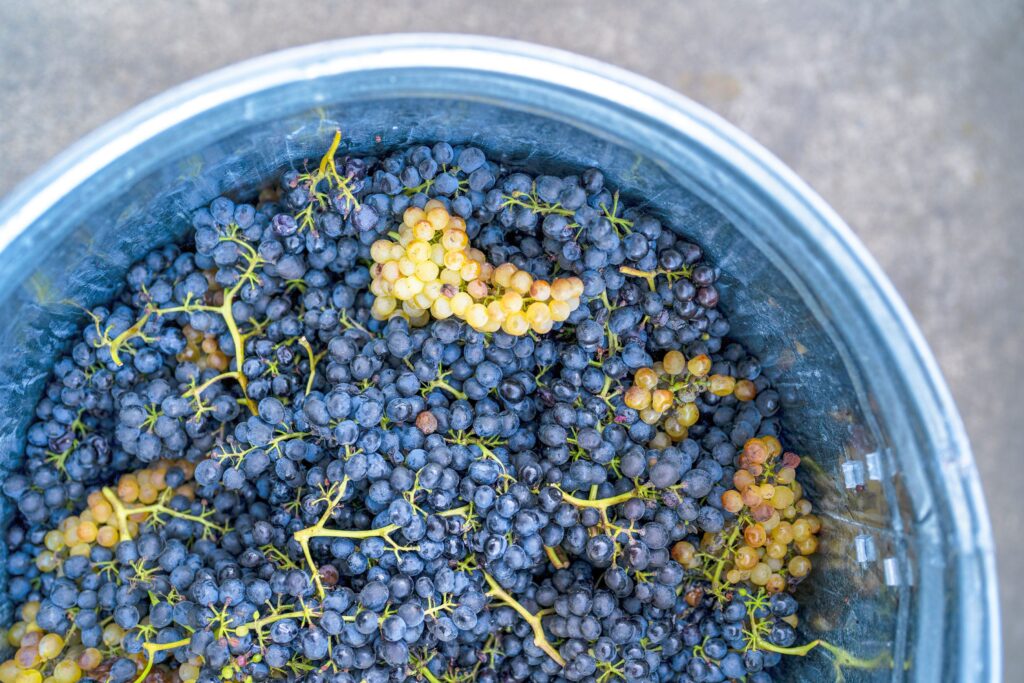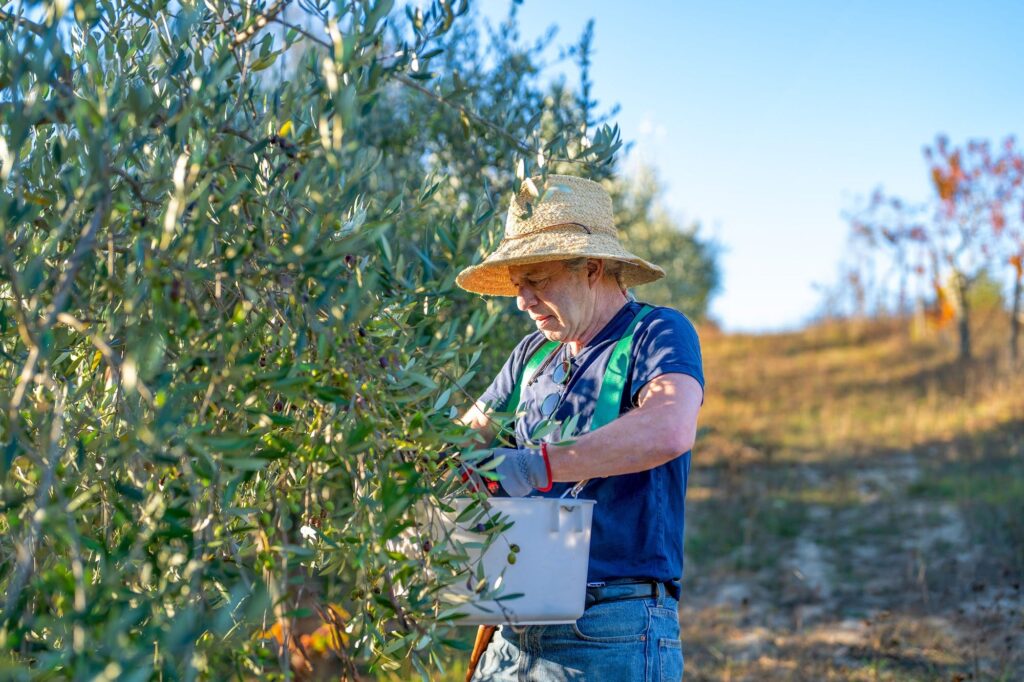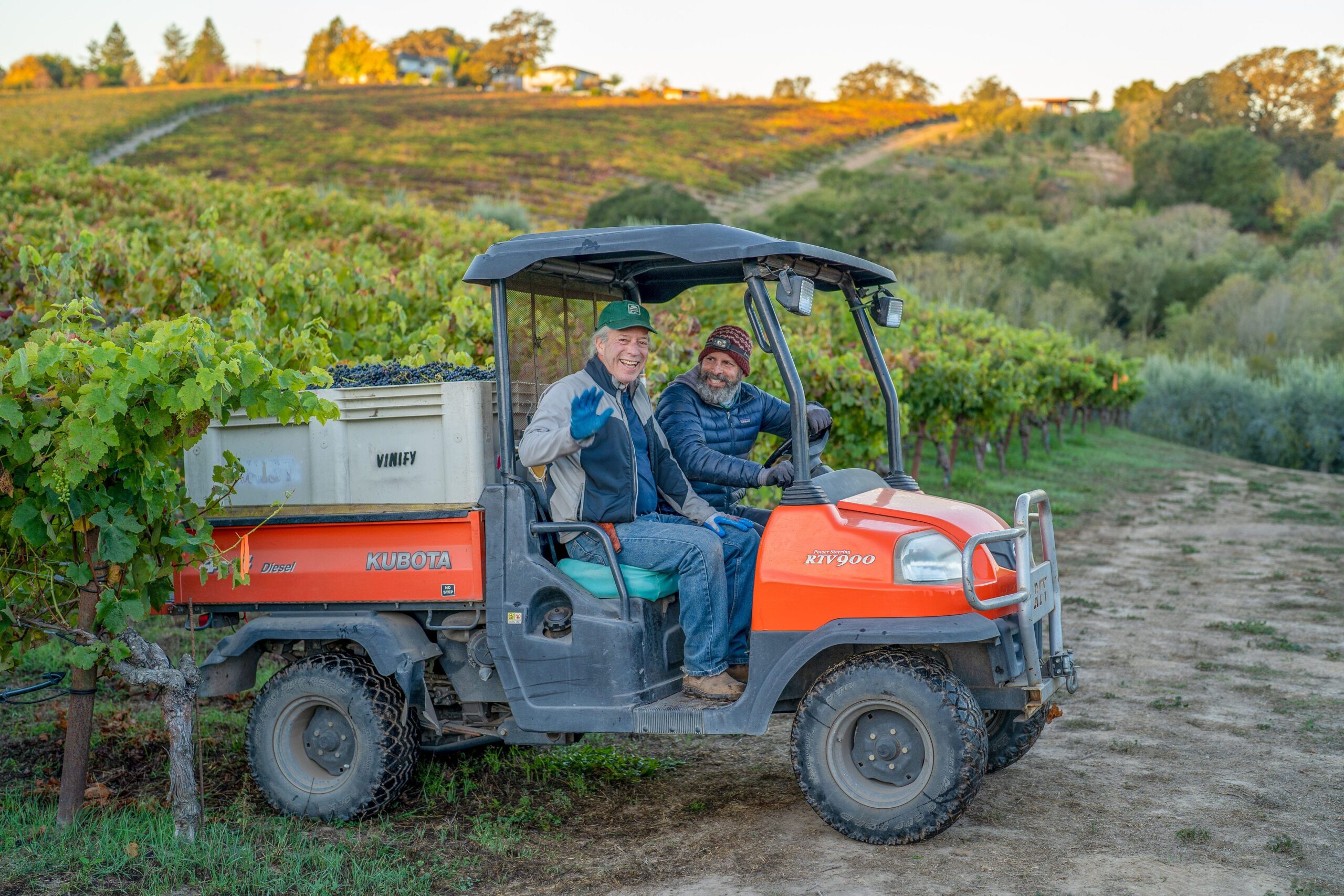The Harvest Numbers Through a Number of Harvests
I’ve always had an affinity for numbers, or to be more precise, arithmetic. I enjoy algebra and geometry too, and both have been indispensable to my painting practice.
At a crucial point in my studies, though, my interests led me away from math and the sciences as a whole. I regret that (along with eschewing deeper early commitments to languages and music), but sometimes it takes living a life to know what fields of knowledge will prove most valuable.
In any case, arithmetic (as in numbers and patterns) has always intrigued me and that passion was energized during the 2022 harvest. As each picking day unfolded, despite the repeated challenging night picks (for the grapes), or the copious hours with a fruit bin affixed to my thorax (while also birddogging my fellow olive harvesters and the attendant logistics), nothing focused me more than the remarkable numbers the harvest presented.
It helped that our growing season on the farm was spectacularly bountiful. Our vineyard had the second highest yield in its 19 year history; tonnage rarely fails to be a sweet concept to behold. More importantly, though, the weather afforded us the opportunity to parse precise zones within our vines through five harvest events, spread over 30 days. These optimal conditions did much to mark each lot with an extraordinary level of quality. Significantly Syrah is a much later maturing grape in our region. Our viticulturist/winemaker Greg Adams’ timely strategies (including strategic watering and a targeted fertilization to support and strengthen the vines and their foliar canopy) proved indispensable. They did much to limit the impact that early September’s devastating heat had on so many other vineyards throughout Sonoma County.
As a result, we and our grape purchasing clients were able to deeply plumb our winegrowing ambitions with 2022’s grapes. We assembled wines with ampler than ever Viognier components, and the numerous picking days afforded us markedly diverse blending components whose aromatic expressions, fruit texture, tannin and acidity created a remarkable vinous toolkit. This is the stuff of dreams for those who aspire to build vinous flavors from the ground up. In tasting the discrete 2022 lots of Singer Baker Lane Estate, I am thrilled to imagine the quality of the finished wines. The Viognier builds beautifully on the achievements of the 2021 harvest, echoing its precise acidity that folds into impressive fruit depth and length. The Syrah’s two main components (picked 23 days apart) provide two compelling facets of the vineyard: one with precisely etched dark fruit perfume, savory notes, and crisp acidity, the latter with sumptuous layers of fruit, warmer textures and length.

Just hours after our last grapes came off the vines, our attention fully shifted to olives.
The Singer Baker Lane Occidental blend oil (drawn from several organically farmed orchards in the county) was slightly more bountiful than last year, and we again produced a wonderfully fruity, green-hued oil that will distinguish any dish. The big olive harvest story, though, was with our 330 Estate trees, and for full context, that requires a bit of retrospection, and, yes, arithmetic.
There’s no way to not regard last year’s Estate Tuscan harvest as a crop failure. Its 120 pounds of fruit didn’t warrant crushing alone and was simply added to that season’s Occidental Blend. In past seasons we have pulled nearly a ton of olives from our home trees. This year’s 4.4 tons by any measure was an eye-popping outcome that took dozens of pickers 7 days to complete. This included the efforts of our farm crews and a multitude of friends and family participants. As I scrambled around the orchard, arithmetic kept me quite occupied. The harvest was almost a 400% increase over any previous year, and a 7000% increase over the 2021 ! As another arithmetic thought experiment, I was amused to calculate that we had hand picked 2,900,000 olives. This piece of data was exactly what I needed to answer the oft-posed question, “How many olives does it take to produce a bottle of oil ? “ (about 3,500, or 11 pounds !)
Amongst the delights of olive oil (in particular in comparison to our wine production) is the immediacy of the journey from tree to oil, which is typically a matter of 2 to 3 hours. Numbers aside, I’m delighted to report that we produced brilliant oil. Our Tuscan dreams (of achieving a jade green oil that evinces delicious aromas and enticing flavors of mown grass, apples, and artichokes) have never been more fully realized. While our yields are still relatively modest, it’s thrilling to revel with such a farming turn vel of quality. Significantly Syrah is a much later maturing grape in our region. Our viticulturist/winemaker Greg Adams’ timely strategies (including strategic watering and a targeted fertilization to support and strengthen the vines and their foliar canopy) proved indispensable. They did much to limit the impact that early September’s devastating heat had on so many other vineyards throughout Sonoma County.


